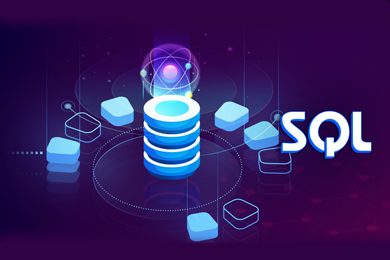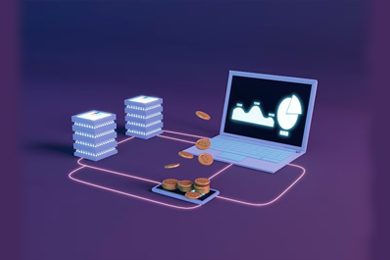This plan includes
- Limited free courses access
- Play & Pause Course Videos
- Video Recorded Lectures
- Learn on Mobile/PC/Tablet
- Quizzes and Real Projects
- Lifetime Course Certificate
- Email & Chat Support
What you'll learn?
- Student will be able to Understand the core concept of SQL and How to use it as a Data Analyst or Data Engineer
Course Overview
SQL is the most widely used language for data analysis and manipulation. Whether you are a data analyst, data scientist, marketer, engineer, or product manager, knowing SQL will help you access and work with data more efficiently and effectively.
In this course, you will learn the basics of SQL and how to use it for various data analysis tasks. You will learn how to write common SQL commands, such as SELECT, FROM, WHERE, JOIN, and GROUP BY. You will also learn how to use more advanced features of SQL, such as subqueries, temp tables, window functions, and date functions.
By the end of this course, you will be able to write SQL queries to extract, transform, and analyze data from any relational database. You will also be able to apply your SQL skills to real-world scenarios and projects.
This course is designed for beginners an Professional who have some familiarity with data in spreadsheets. No prior programming experience is required. All you need is a computer and an internet connection.
Join this course today and start your journey to becoming a SQL expert!?
SQL is used in many real-world scenarios where data is stored in relational databases and needs to be accessed, manipulated, or analyzed. Here are some examples:
-
E-commerce websites use SQL to store product information, customer details, orders, payments, and reviews. For example, Amazon uses MySQL, a popular relational database management system, for its online transactions.
-
Social media networks use SQL to store user information, posts, comments, likes, shares, and messages. For example, Facebook uses MySQL for its primary data storage and Hive for its data warehouse.
-
Educational institutions use SQL to store student records, grades, courses, enrollments, and attendance. For example, Stanford University uses Oracle Database, a powerful relational database management system, for its administrative and academic functions.
Pre-requisites
- Any one can join Course and Understand the Core Concept of Data
Target Audience
- Working Professionals beginning their Data journey
- Anyone curious to master SQL from beginner to Advanced in short span of time
- Data Analyst
Curriculum 117 Lectures 07:28:54
Section 1 : Introduction
- Lecture 2 :
- Connect To SQL Server
Section 2 : Data Definition Language
- Lecture 1 :
- Data Base
- Lecture 2 :
- Create Schema
- Lecture 3 :
- Alter Schema
- Lecture 4 :
- Create Table
- Lecture 5 :
- Add Column
- Lecture 6 :
- Change Column Data Type
- Lecture 7 :
- Compute Column
- Lecture 8 :
- Drop Column
- Lecture 9 :
- Truncate Table
- Lecture 10 :
- Drop Table
Section 3 : SQL Data Type
- Lecture 1 :
- SQL Server Data Type Into
- Lecture 2 :
- BIT
- Lecture 3 :
- Integer
- Lecture 4 :
- Char and Varchar
- Lecture 5 :
- Date Time
- Lecture 6 :
- GUID
Section 4 : Constraint
- Lecture 1 :
- Primary Key On Single Column
- Lecture 2 :
- Primary Key on Multiple Column
- Lecture 3 :
- Primary Key On Existing Table
- Lecture 4 :
- Foreign Key
- Lecture 5 :
- Foreign Key Example
- Lecture 6 :
- Action On Child Table When Update On Parent Table
- Lecture 7 :
- Action On Child Table When Delete On Parent Table
- Lecture 8 :
- Unique Key
- Lecture 9 :
- Unique Key On Multiple Column
- Lecture 10 :
- Unique Key On Existing Table
- Lecture 11 :
- Check Constraint
- Lecture 12 :
- Drop Check Constraint
Section 5 : Temp Table
- Lecture 1 :
- Local Temp Table
- Lecture 2 :
- Global Temp Table
Section 6 : Limiting The Rows
- Lecture 1 :
- Offset and Fetch
- Lecture 2 :
- Top With Percentage and Ties
Section 7 : Filtering Data
- Lecture 1 :
- Distinct
- Lecture 2 :
- Where Clause with Equal and Not Equal
- Lecture 3 :
- Where Clause with <,>,>=,<= Operator
- Lecture 4 :
- Where Clause with not like Operator
- Lecture 5 :
- Where Clause with like Operator
- Lecture 6 :
- Where Clause with and, Or
- Lecture 7 :
- Where Clause with Null
- Lecture 8 :
- Where Clause with Exist and Not Exist
Section 8 : Joining Table
- Lecture 1 :
- Left Join
- Lecture 2 :
- Right Join
- Lecture 3 :
- Inner Join
- Lecture 4 :
- Cross Join
- Lecture 5 :
- Full Outer Join
- Lecture 6 :
- Advance or Intelligent Join
Section 9 : Group By
- Lecture 1 :
- Group BY
- Lecture 2 :
- Group By With Aggregate
- Lecture 3 :
- Cube
- Lecture 4 :
- Group By with Where and Having Clause
- Lecture 5 :
- Group by with Grouping Set
Section 10 : Sub Query
- Lecture 1 :
- Sub Query
- Lecture 2 :
- Nested Sub Query
- Lecture 3 :
- Subquery with Exist and Not Exist
- Lecture 4 :
- Sub Query with Any and All
- Lecture 5 :
- CO-Related Sub Query
- Lecture 6 :
- Sub Query in Expression
- Lecture 7 :
- Sub Query in From Clause
Section 11 : Set Operator
- Lecture 1 :
- Union and Union All
- Lecture 2 :
- Intersection
- Lecture 3 :
- Except
Section 12 : Data Manipulation Language
- Lecture 1 :
- Insert Data in Table
- Lecture 2 :
- Insert Data From Another Table
- Lecture 3 :
- Insert Top N Value
- Lecture 4 :
- Insert Top N Percent Value
- Lecture 5 :
- Update Rows
- Lecture 6 :
- Update Rows From Another Table
- Lecture 7 :
- Delete
- Lecture 8 :
- Delete Top N Rows
- Lecture 9 :
- Delete Top N Percent
Section 13 : Truncate and Truncate Vs Delete
- Lecture 1 :
- Truncate
Section 14 : Identity and Sequence
- Lecture 1 :
- Identity
- Lecture 2 :
- Sequence and Sequence vs identity column
Section 15 : Common Table Expression
- Lecture 1 :
- Common Table Expression
- Lecture 2 :
- Recursive Common Table Expression
- Lecture 3 :
- Multiple CTE in SQL Server
Section 16 : Pivot Table
- Lecture 1 :
- Pivot Table
Section 17 : Function in SQL
- Lecture 1 :
- String Function
- Lecture 2 :
- Date and Time Function
- Lecture 3 :
- User Defined Function
- Lecture 4 :
- Inline Table Value Function
- Lecture 5 :
- Multi Statement Table Value Function
Section 18 : Window or Analytics Function
- Lecture 1 :
- Rank Function
- Lecture 2 :
- First and Last
- Lecture 3 :
- Lead and Lag
- Lecture 4 :
- CUM Distributive Function
- Lecture 5 :
- NTILE Function
Section 19 : View in SQL
- Lecture 1 :
- View Definition
- Lecture 2 :
- View
- Lecture 3 :
- Advantage Of View
- Lecture 4 :
- Materialized View
Section 20 : Store Procedure in SQL
- Lecture 1 :
- Store Procedure and Its Benefit
- Lecture 2 :
- Store Procedure Without Parameter
- Lecture 3 :
- Store Procedure With Input Parameter
- Lecture 4 :
- Store Procedure With Input Default Parameter
- Lecture 5 :
- Store Procedure with Out Put Parameter
- Lecture 6 :
- Temporary Store Procedure
- Lecture 7 :
- Store Procedure with Encryption
- Lecture 8 :
- Modify Store Procedure
Section 21 : Normalization
- Lecture 1 :
- Normalization
Section 22 : Regex in SQL
- Lecture 1 :
- Regex Starts With
- Lecture 2 :
- Regex Ends with
- Lecture 3 :
- Regex with Exclude Character
- Lecture 4 :
- Regex with Specific Pattern
Section 23 : Expression In SQL
- Lecture 1 :
- Case Statement
- Lecture 2 :
- Is Null
- Lecture 3 :
- Null If
Section 24 : Trigger
- Lecture 1 :
- Trigger
- Lecture 2 :
- Instead of Insert
- Lecture 3 :
- After Insert
- Lecture 4 :
- Instead of Delete
- Lecture 5 :
- After Delete
- Lecture 6 :
- Instead of Update
- Lecture 7 :
- After Update
- Lecture 8 :
- DDL trigger
Our learners work at
Frequently Asked Questions
How do i access the course after purchase?
It's simple. When you sign up, you'll immediately have unlimited viewing of thousands of expert courses, paths to guide your learning, tools to measure your skills and hands-on resources like exercise files. There’s no limit on what you can learn and you can cancel at any time.Are these video based online self-learning courses?
Yes. All of the courses comes with online video based lectures created by certified instructors. Instructors have crafted these courses with a blend of high quality interactive videos, lectures, quizzes & real world projects to give you an indepth knowledge about the topic.Can i play & pause the course as per my convenience?
Yes absolutely & thats one of the advantage of self-paced courses. You can anytime pause or resume the course & come back & forth from one lecture to another lecture, play the videos mulitple times & so on.How do i contact the instructor for any doubts or questions?
Most of these courses have general questions & answers already covered within the course lectures. However, if you need any further help from the instructor, you can use the inbuilt Chat with Instructor option to send a message to an instructor & they will reply you within 24 hours. You can ask as many questions as you want.Do i need a pc to access the course or can i do it on mobile & tablet as well?
Brilliant question? Isn't it? You can access the courses on any device like PC, Mobile, Tablet & even on a smart tv. For mobile & a tablet you can download the Learnfly android or an iOS app. If mobile app is not available in your country, you can access the course directly by visting our website, its fully mobile friendly.Do i get any certificate for the courses?
Yes. Once you complete any course on our platform along with provided assessments by the instructor, you will be eligble to get certificate of course completion.
For how long can i access my course on the platform?
You require an active subscription to access courses on our platform. If your subscription is active, you can access any course on our platform with no restrictions.Is there any free trial?
Currently, we do not offer any free trial.Can i cancel anytime?
Yes, you can cancel your subscription at any time. Your subscription will auto-renew until you cancel, but why would you want to?



 Tech & IT
Tech & IT
 Business
Business
 Coding & Developer
Coding & Developer
 Finance & Accounting
Finance & Accounting
 Academics
Academics
 Office Applications
Office Applications
 Art & Design
Art & Design
 Marketing
Marketing
 Health & Wellness
Health & Wellness
 Sounds & Music
Sounds & Music
 Lifestyle
Lifestyle
 Photography
Photography

















